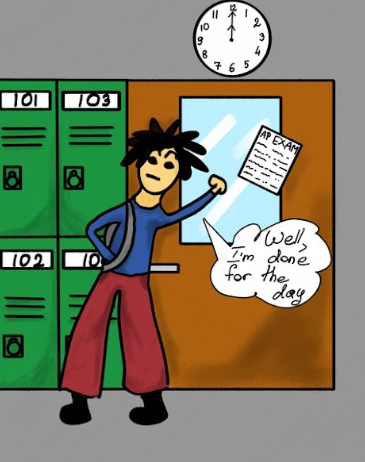Daydreaming in class is not uncommon. According to the Oxford Dictionary, daydreaming is a stream of consciousness that can distract from the present. However, research suggests that daydreaming can have several benefits, including reducing stress and anxiety, boosting critical thinking skills, and helping individuals achieve their life goals.
Whether it be night or day, dreaming can lead to many positive outcomes. For instance, Beatles’ frontman Paul McCartney woke up one morning with the melody for “Yesterday” in his head. Even though he had not yet written the lyrics, he improvised and used the phrase “scrambled eggs” as a placeholder. Dmitri Mendeleev was a Russian chemist recognized for his contribution to the creation of the periodic table. After struggling for three days to classify 56 elements, he decided to take a break and get some sleep. During his sleep, Mendeleev had a dream in which he pictured a table where all the elements fell into place. When he woke up, he immediately wrote it down and thus came up with the periodic table.
While daydreaming can lead to brilliant ideas, it can also be problematic if it becomes an obsession. Health teacher Jennifer Kramer shared, “I am also an avid daydreamer and encourage it, but not during class when focus is necessary.” Nobody is immune to daydreaming and getting distracted, but it should be done in moderation.
Daydreaming has numerous benefits, including creativity, enhancing memory retention, and reducing stress levels. However, it is important to note that daydreaming can also exacerbate procrastination, leading to wasted time. Therefore, individuals should consider their situations to determine how much time they can allow for daydreaming.
Some people find it harder to control their daydreaming tendencies than others. One difficulty that some face is attention deficit hyperactivity disorder (ADHD). The National Institute of Mental Health’s website (NIH.gov) explains that ADHD is “an ongoing pattern of inattention and/or hyperactivity-impulsivity that interferes with functioning or development.” Daydreaming is a type of inattention common in students with ADHD that can contribute to their unfocused behavior. It is essential to recognize that there might not be a universal cure for daydreaming because people experience it to varying extents.
Have you ever wondered what a teacher does when he or she sees a student slacking off or daydreaming? “When I see it, I try to bring them back without pointing them out because you do not want the rest of the class to know that they are distracted because that can happen to anyone,” explained Italian teacher Antonella Tranchina. As Tranchina related, getting distracted is a common experience, especially when the topic is difficult or not particularly engaging. By being understanding and compassionate, teachers can help their students stay focused and motivated to learn.
Global history teacher Olga Zisel also faces the issue of daydreaming students. She expressed that identifying the reason behind a student’s lack of attention is not always easy, as it is hard to tell if he is daydreaming, feeling unwell, or struggling to concentrate due to other reasons. Zisel admitted that such situations can be tricky to handle, as she does not want to make assumptions and risk embarrassing the student. It can be challenging to identify the reason behind a student’s lack of attention, but by being patient and empathetic, teachers can assist their students.
Daydreaming is often considered a negative behavior and is associated with idleness, lack of focus, and unproductivity. However, this perspective overlooks the potential benefits of daydreaming. When people daydream, they allow their minds to wander freely and explore new ideas and possibilities. Daydreaming can lead to increased creativity, problem-solving, and innovation. It gives our brains a chance to rest and can even improve our overall well-being.
So, when a student catches himself daydreaming, he need not feel guilty—rather, he can embrace it as a valuable tool for the mind. But it is vital to be aware of its frequency and timing to ensure that daydreaming remains a productive activity and does not become a limitation.


































